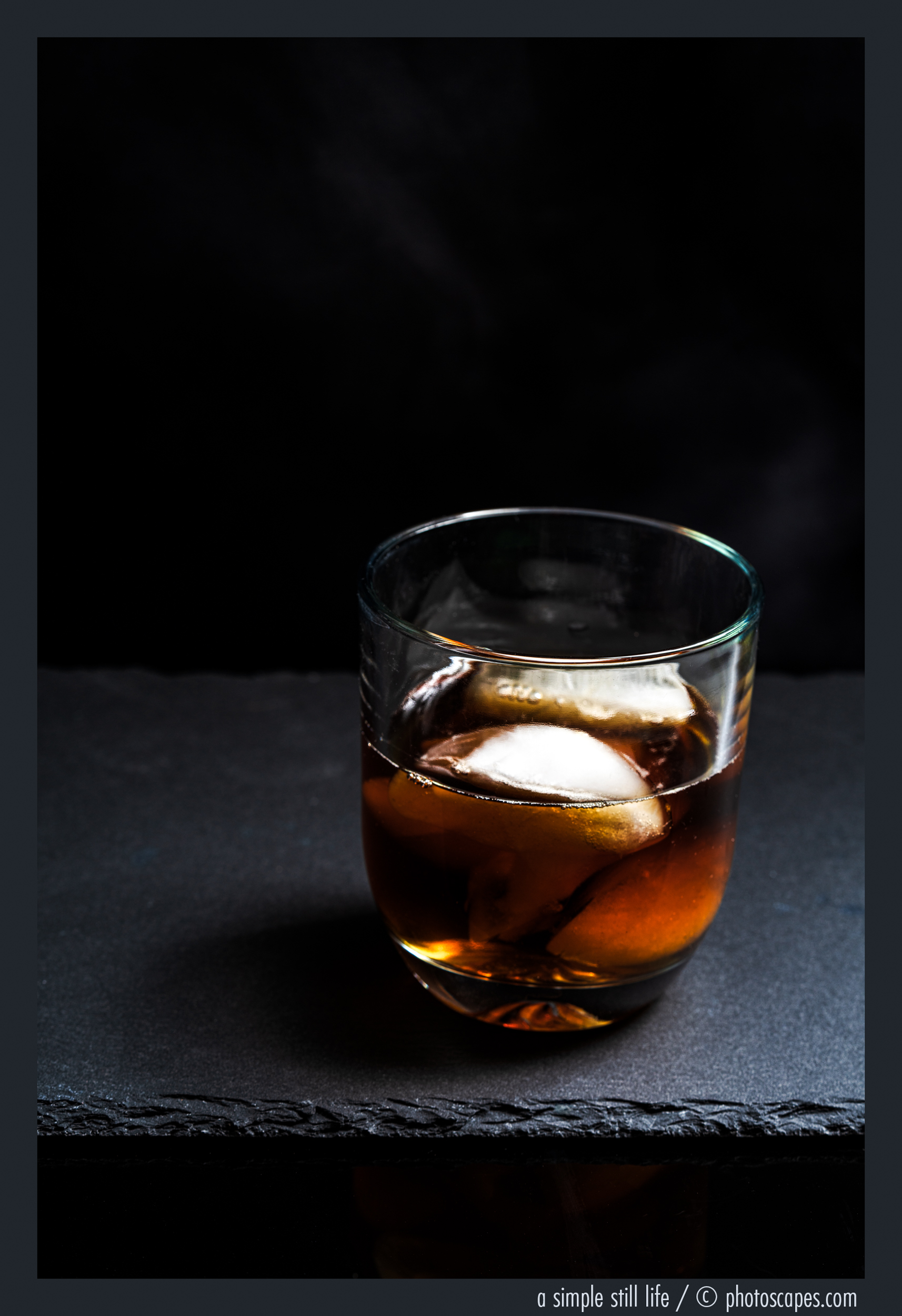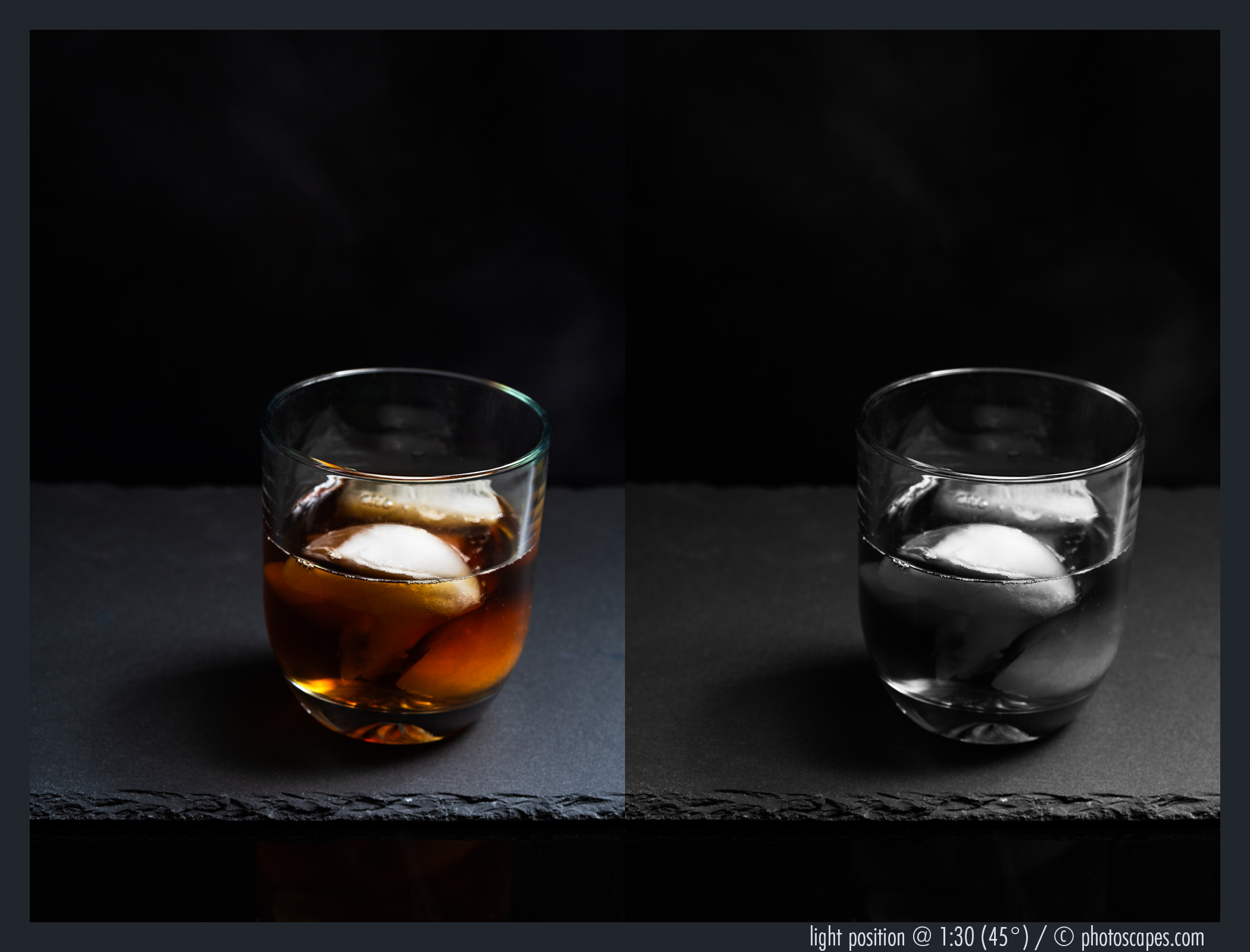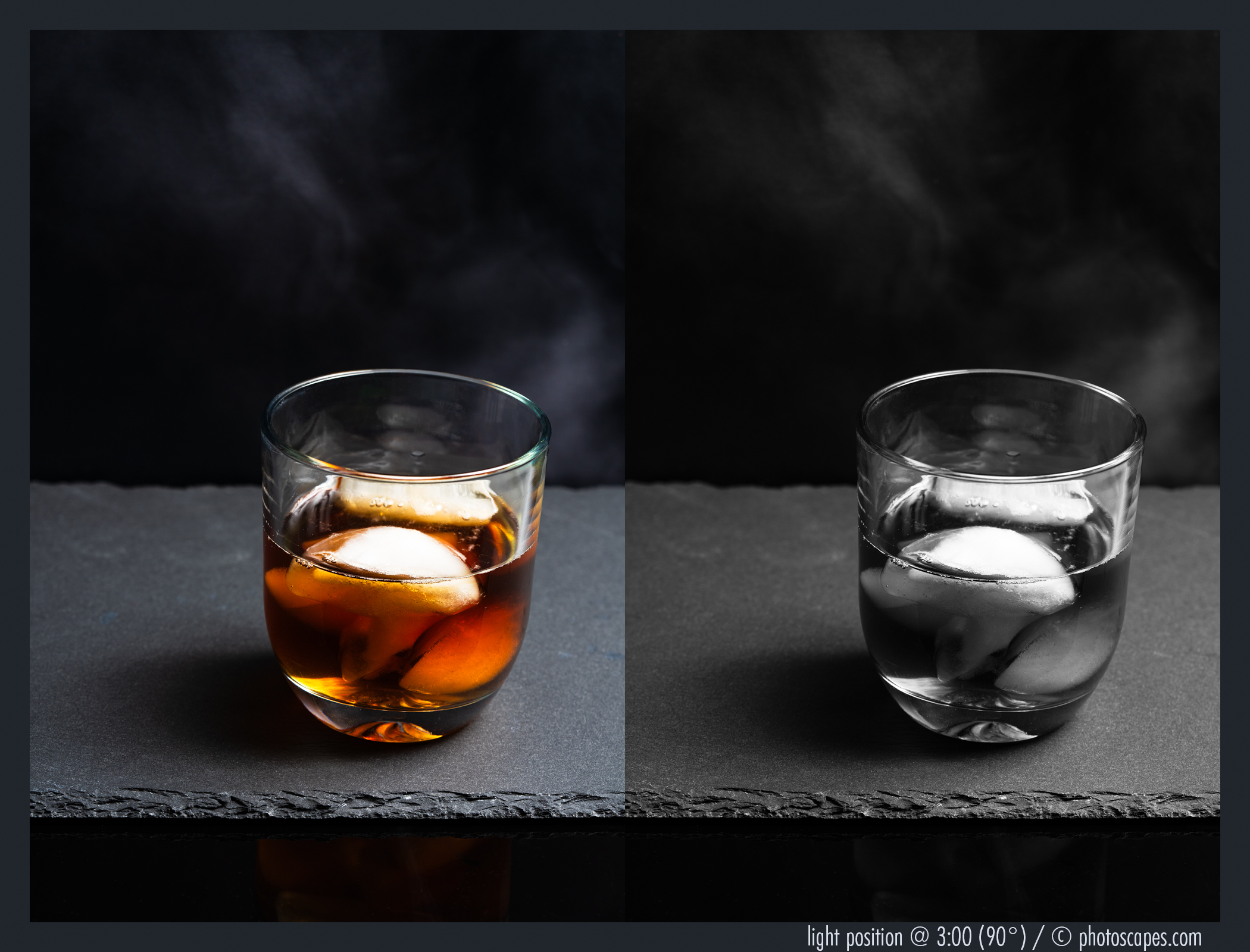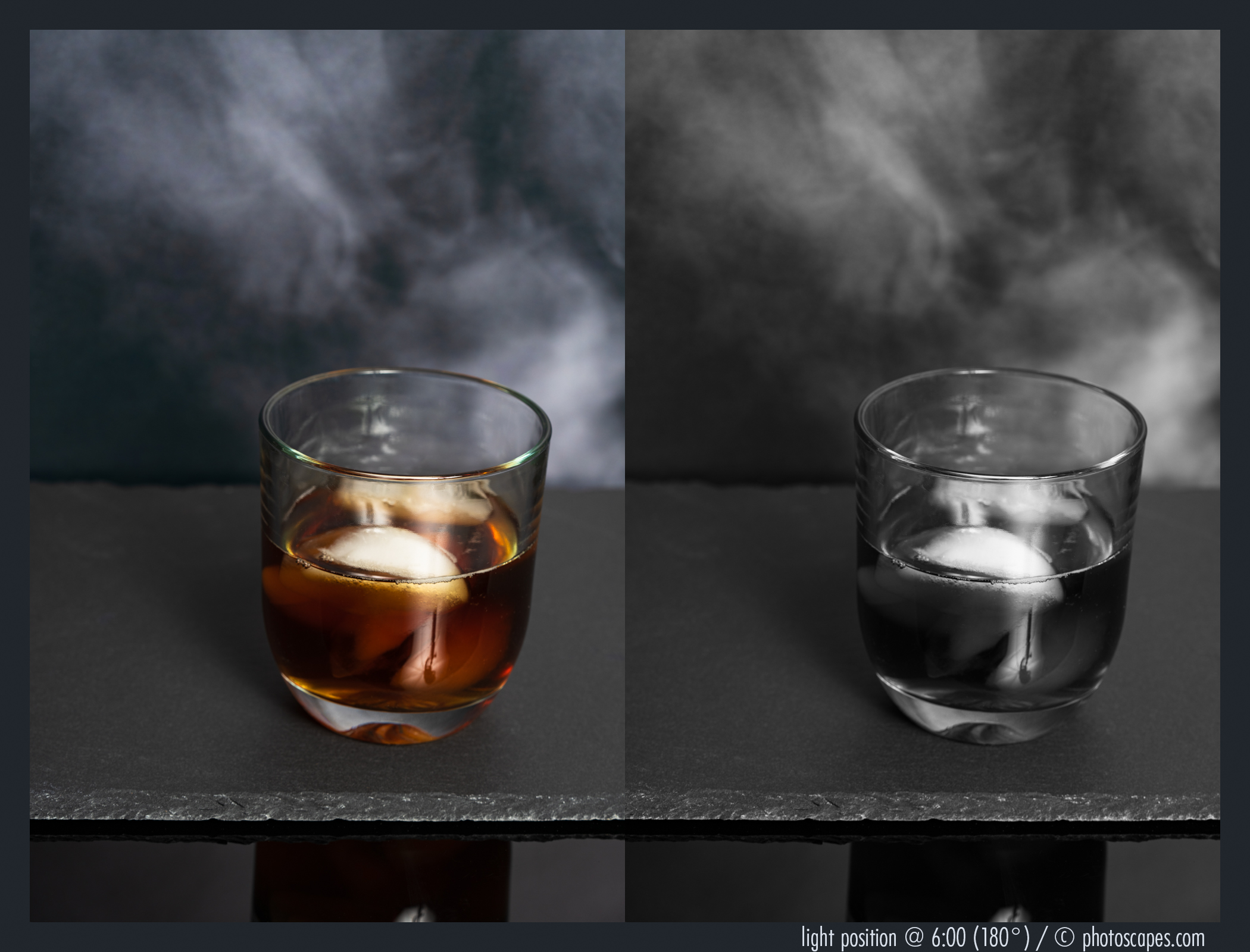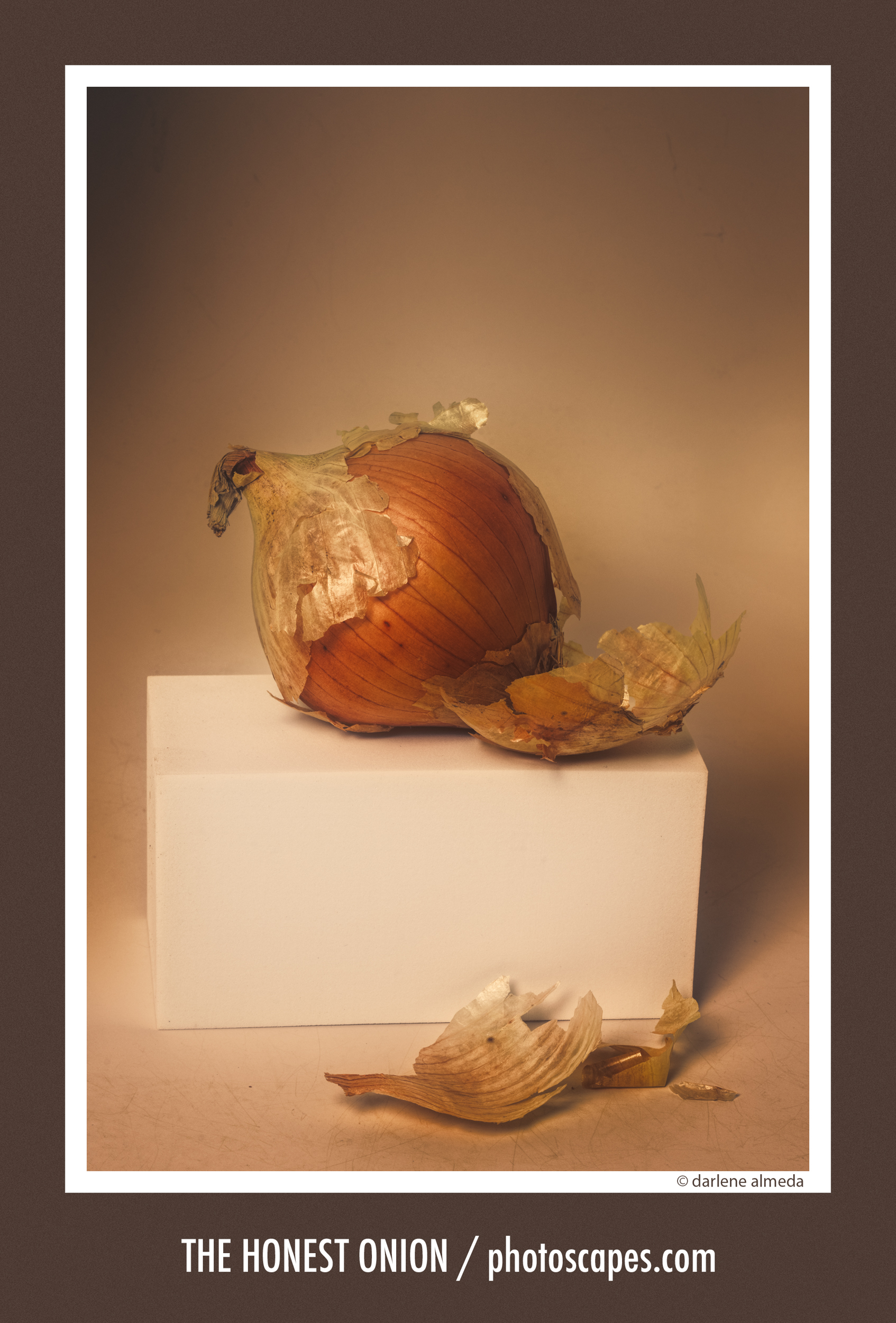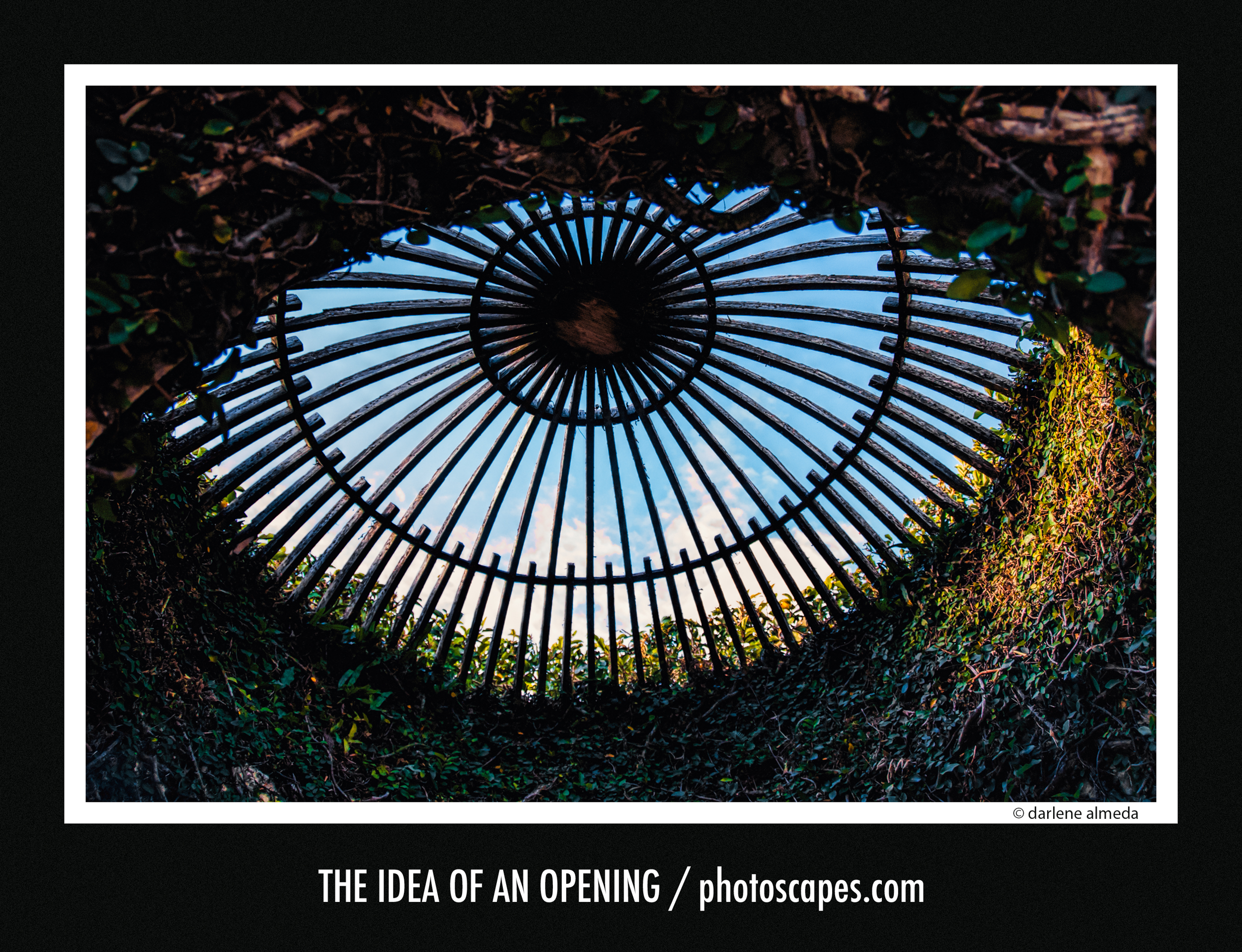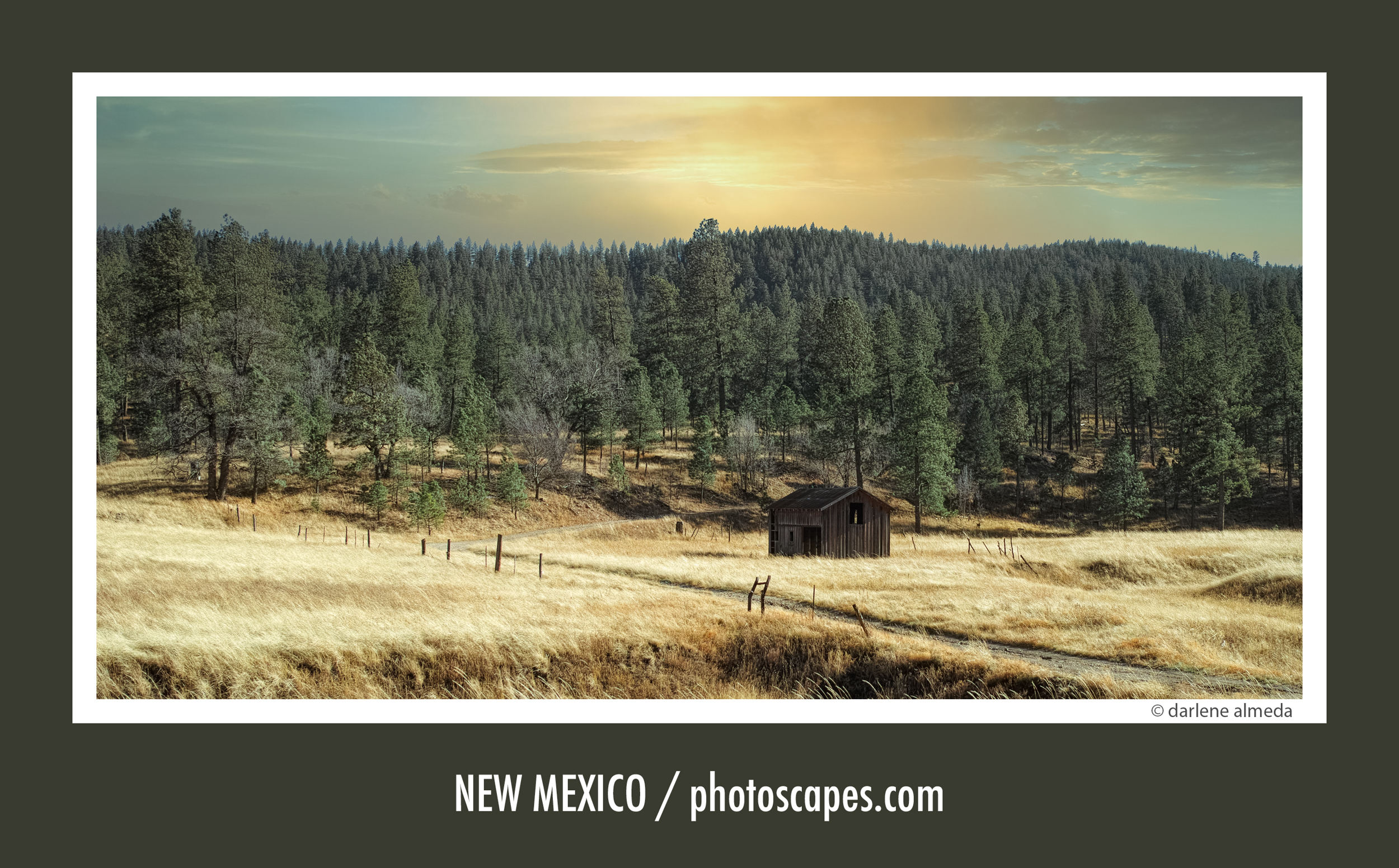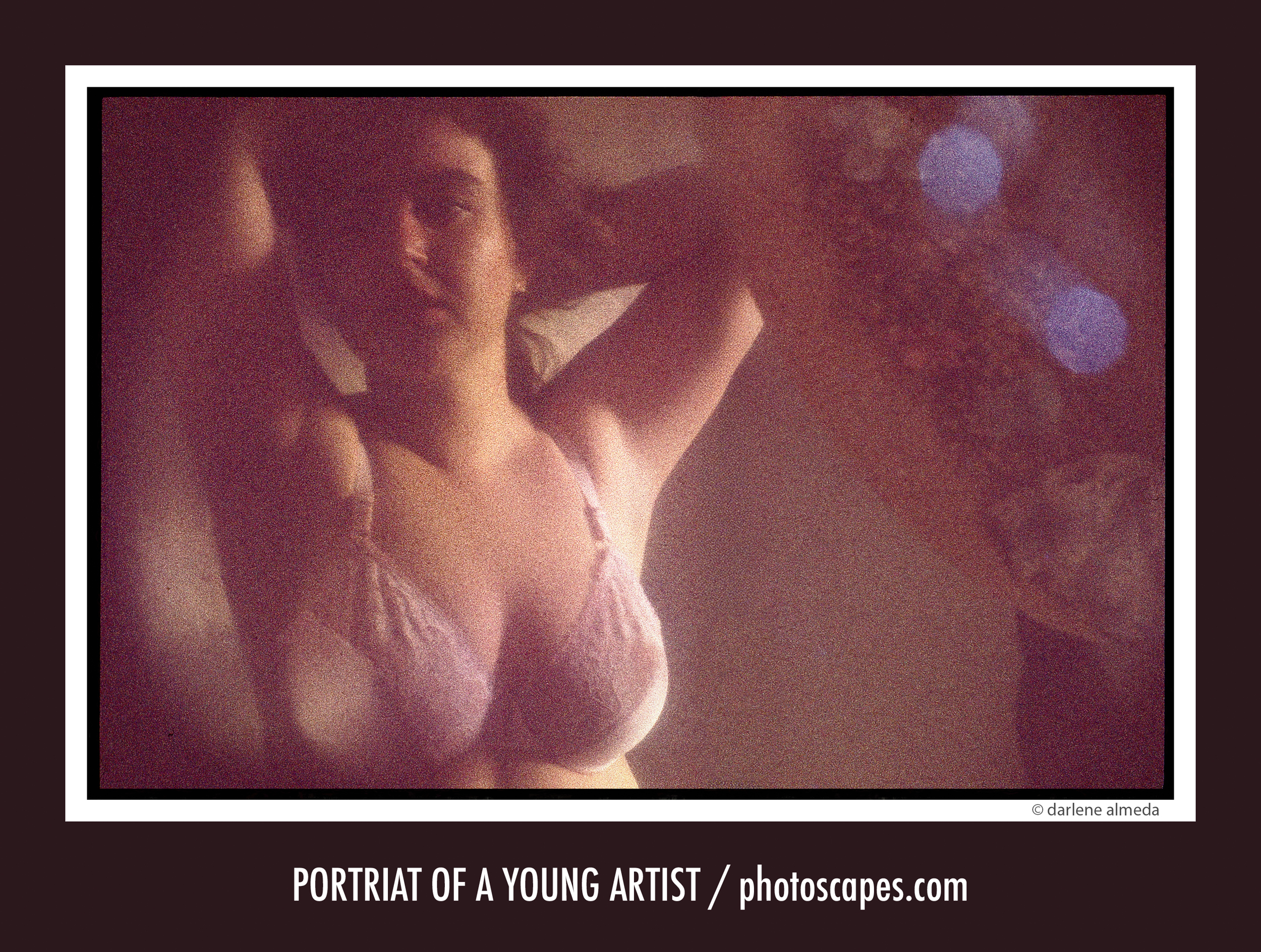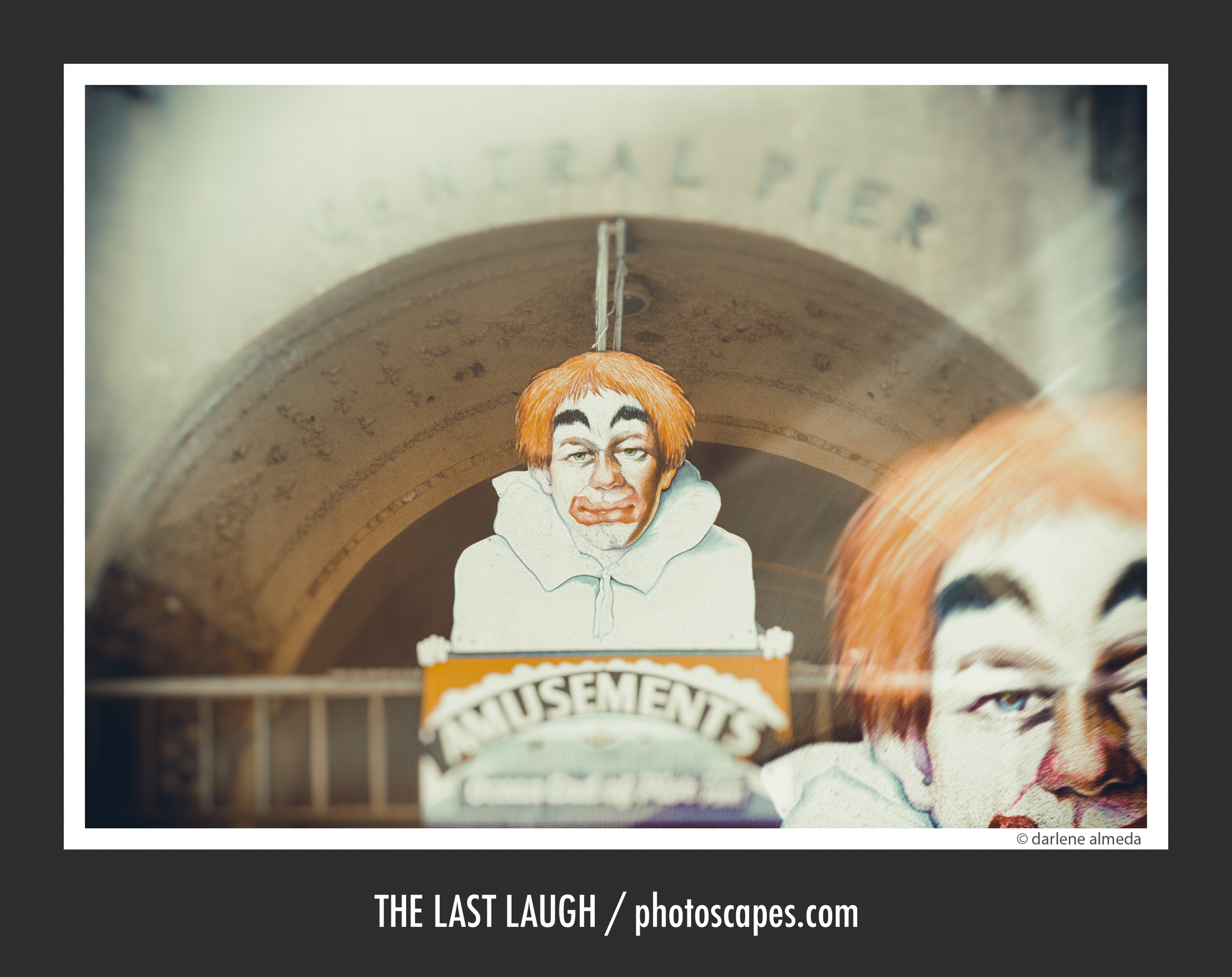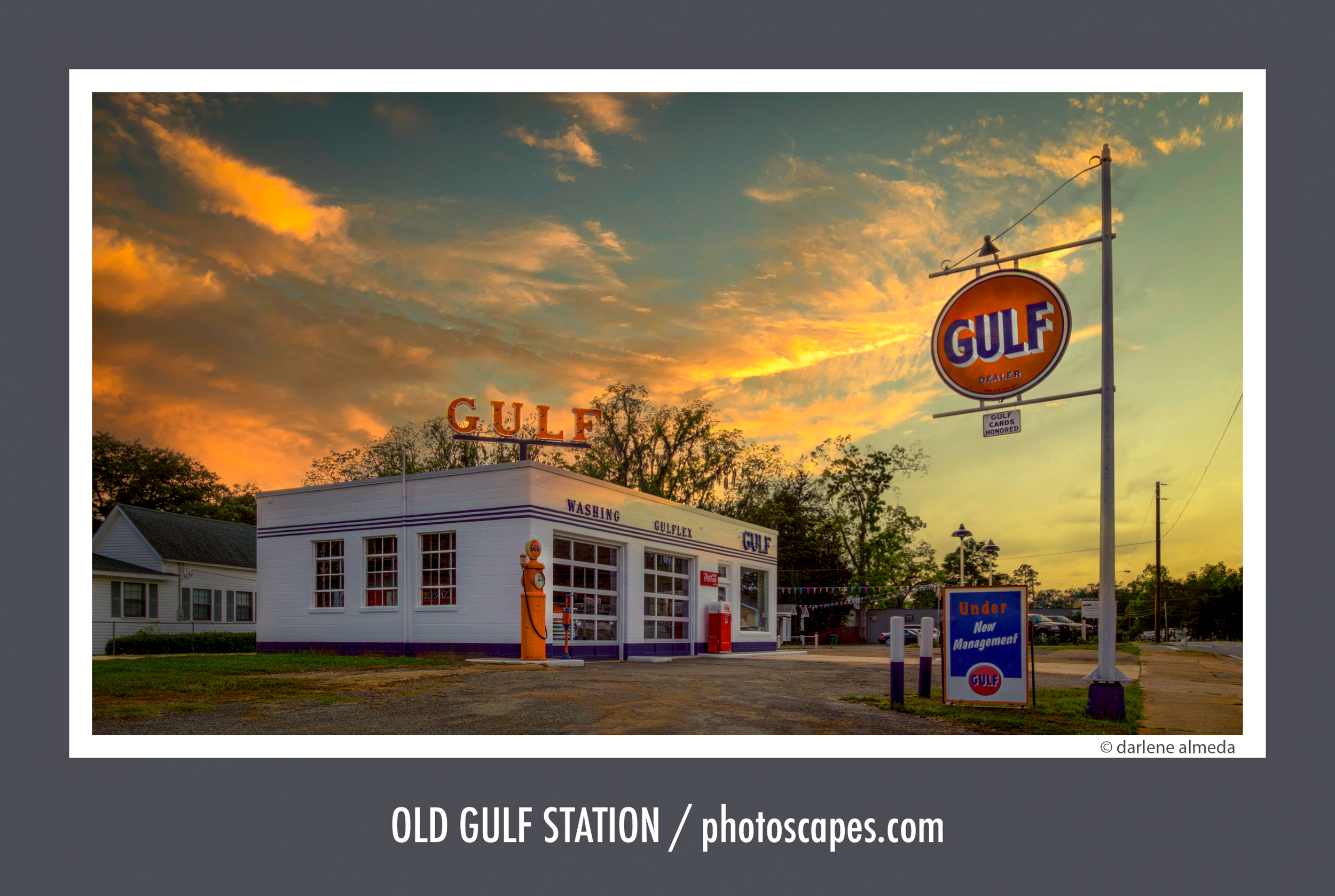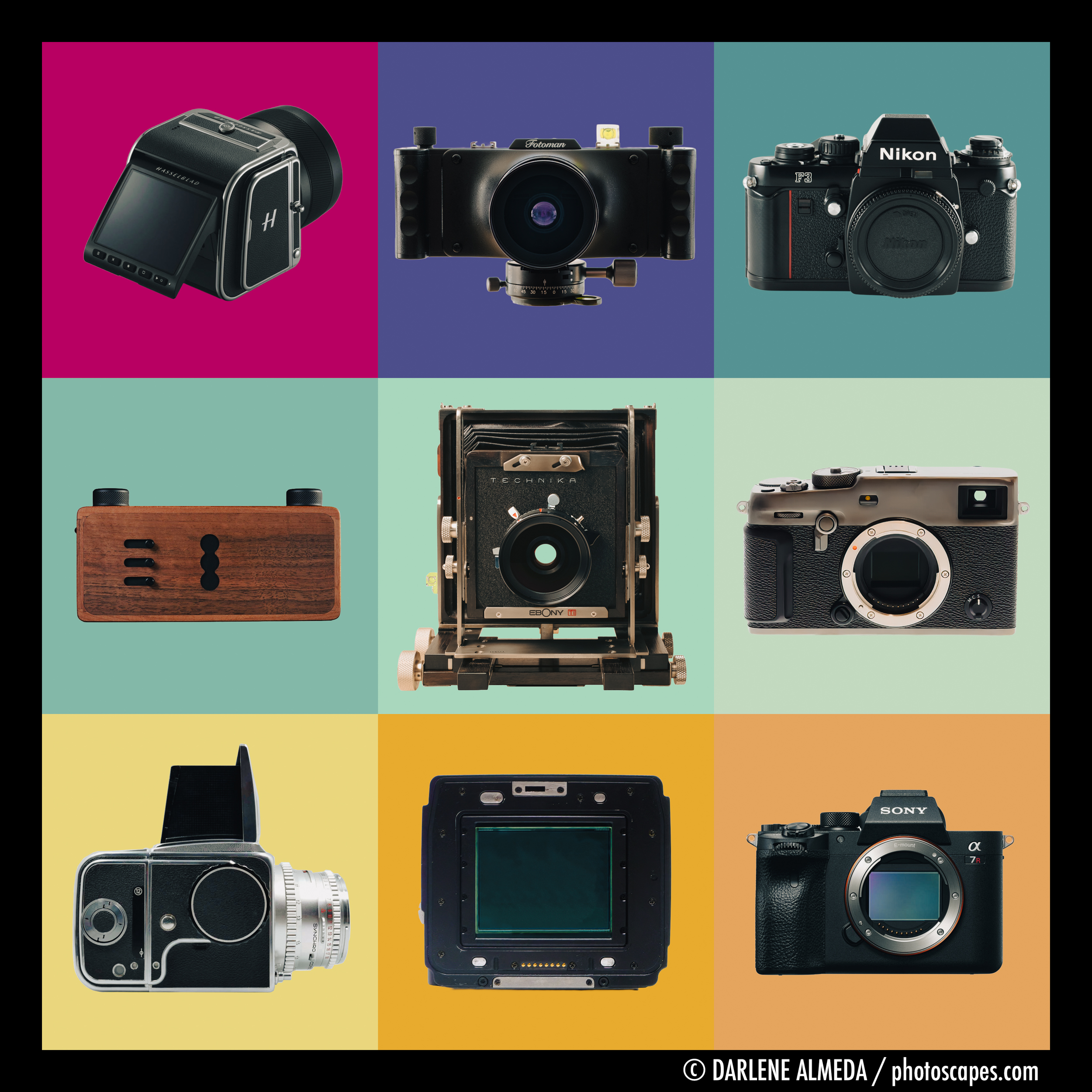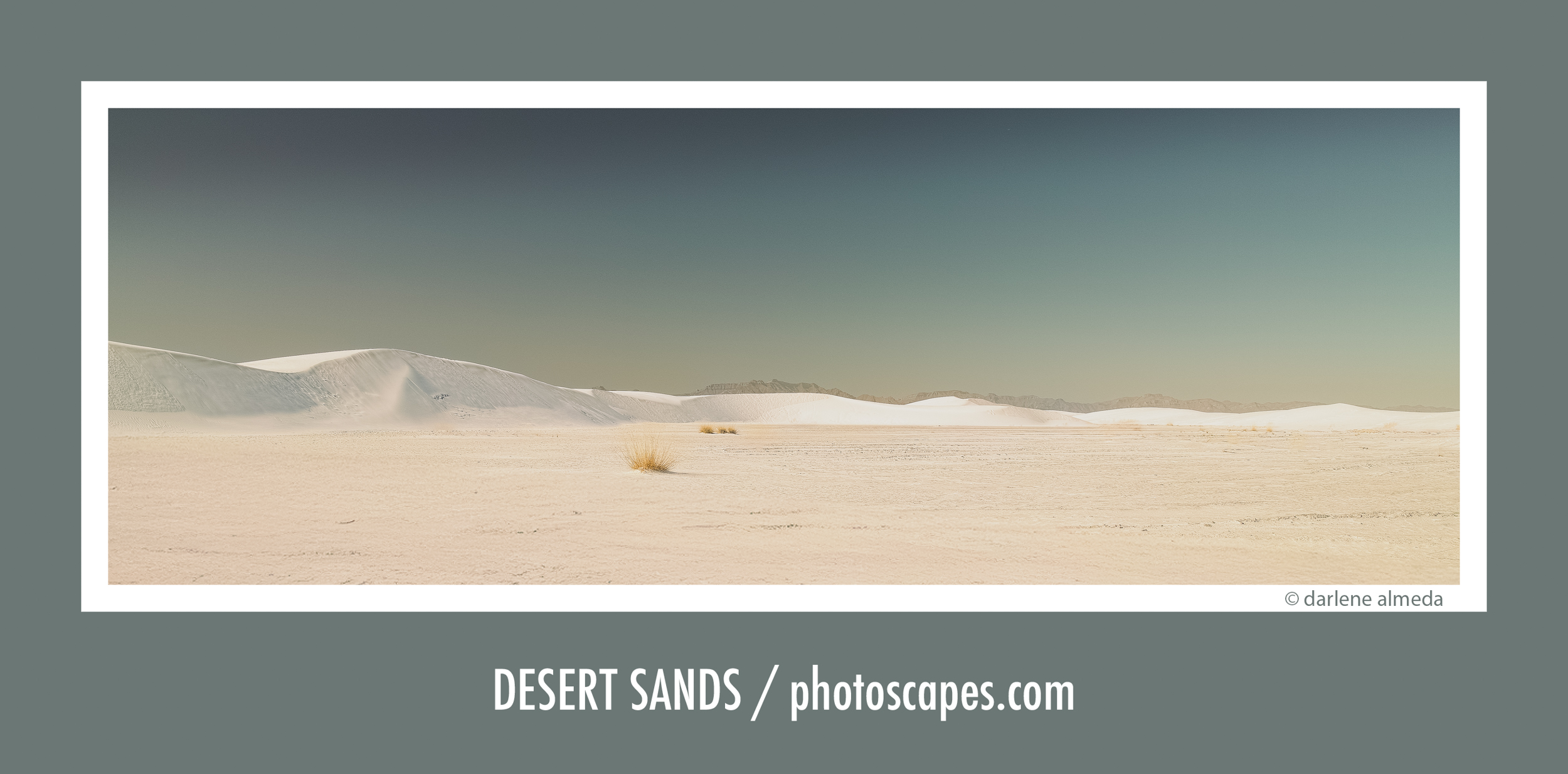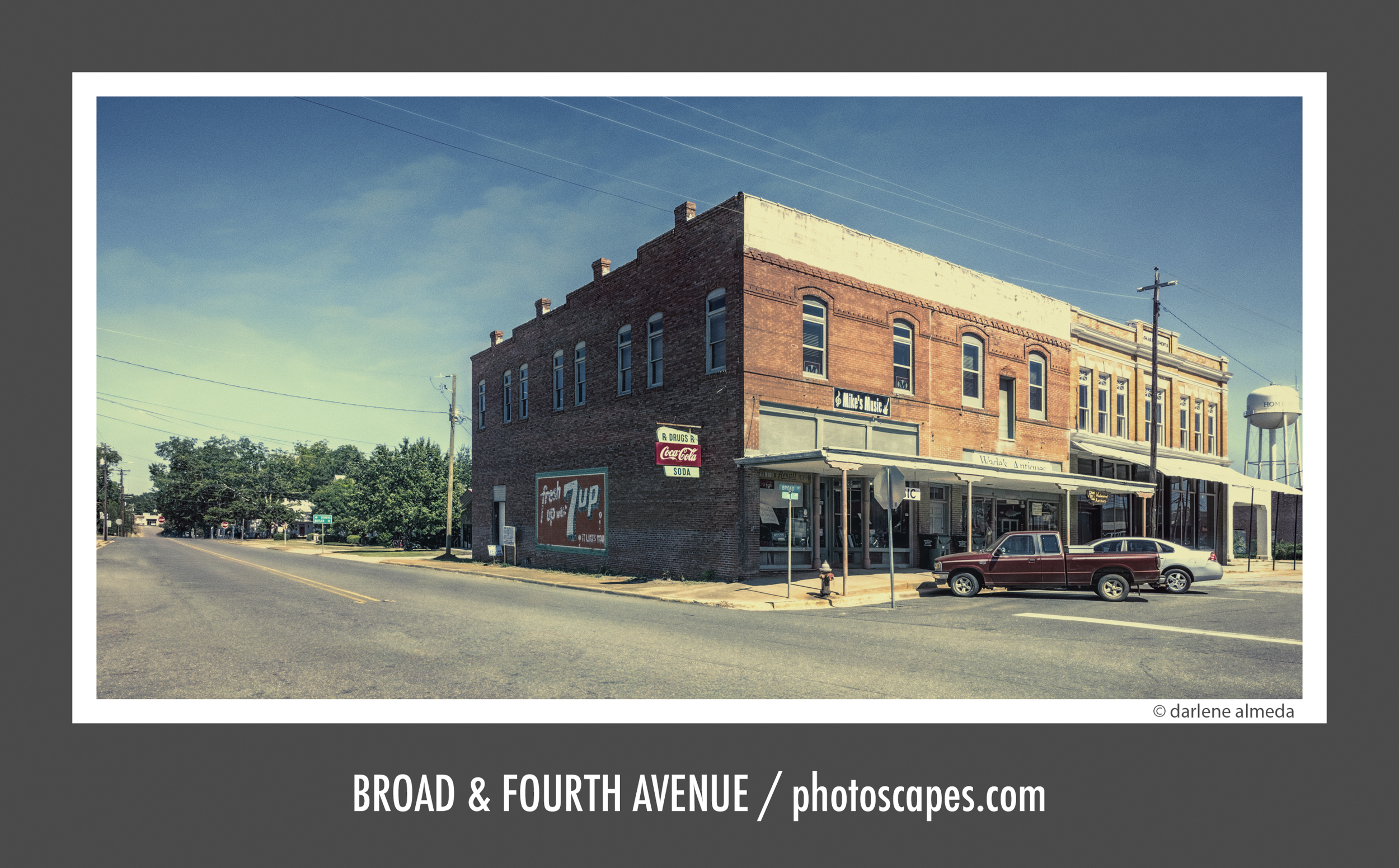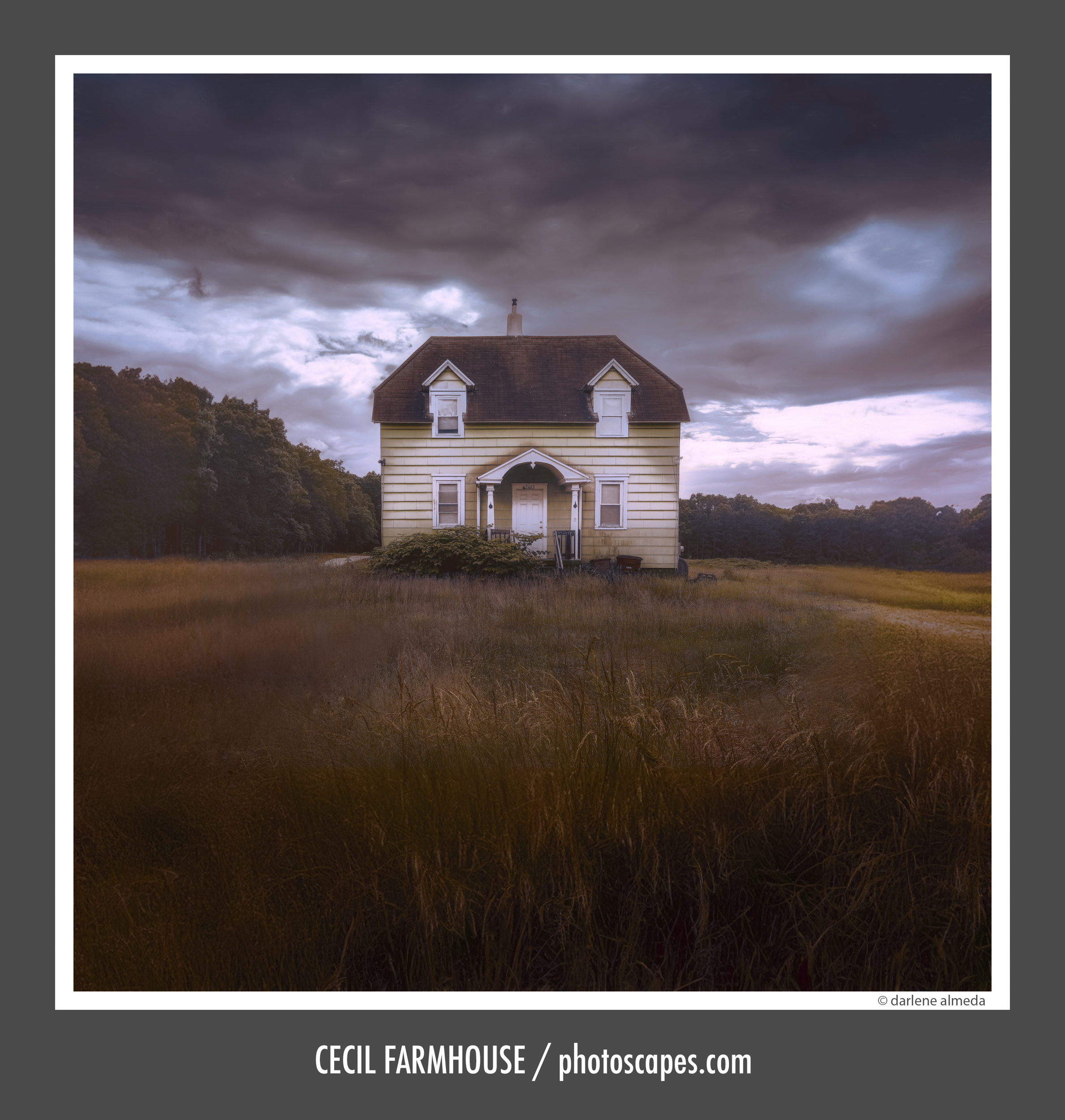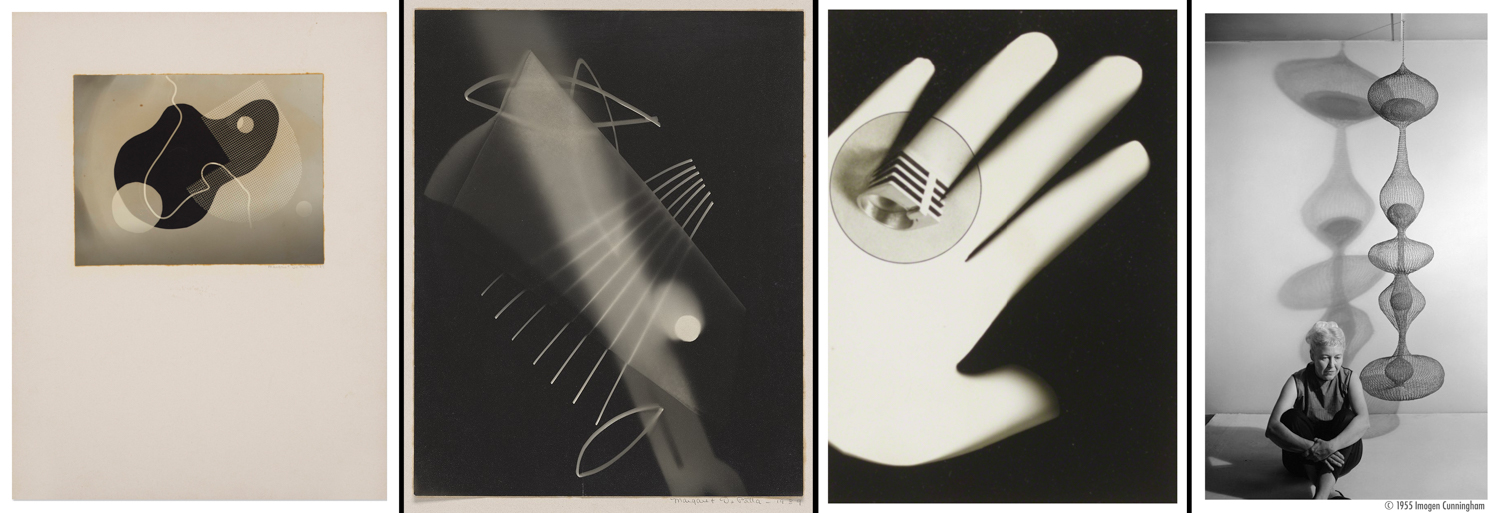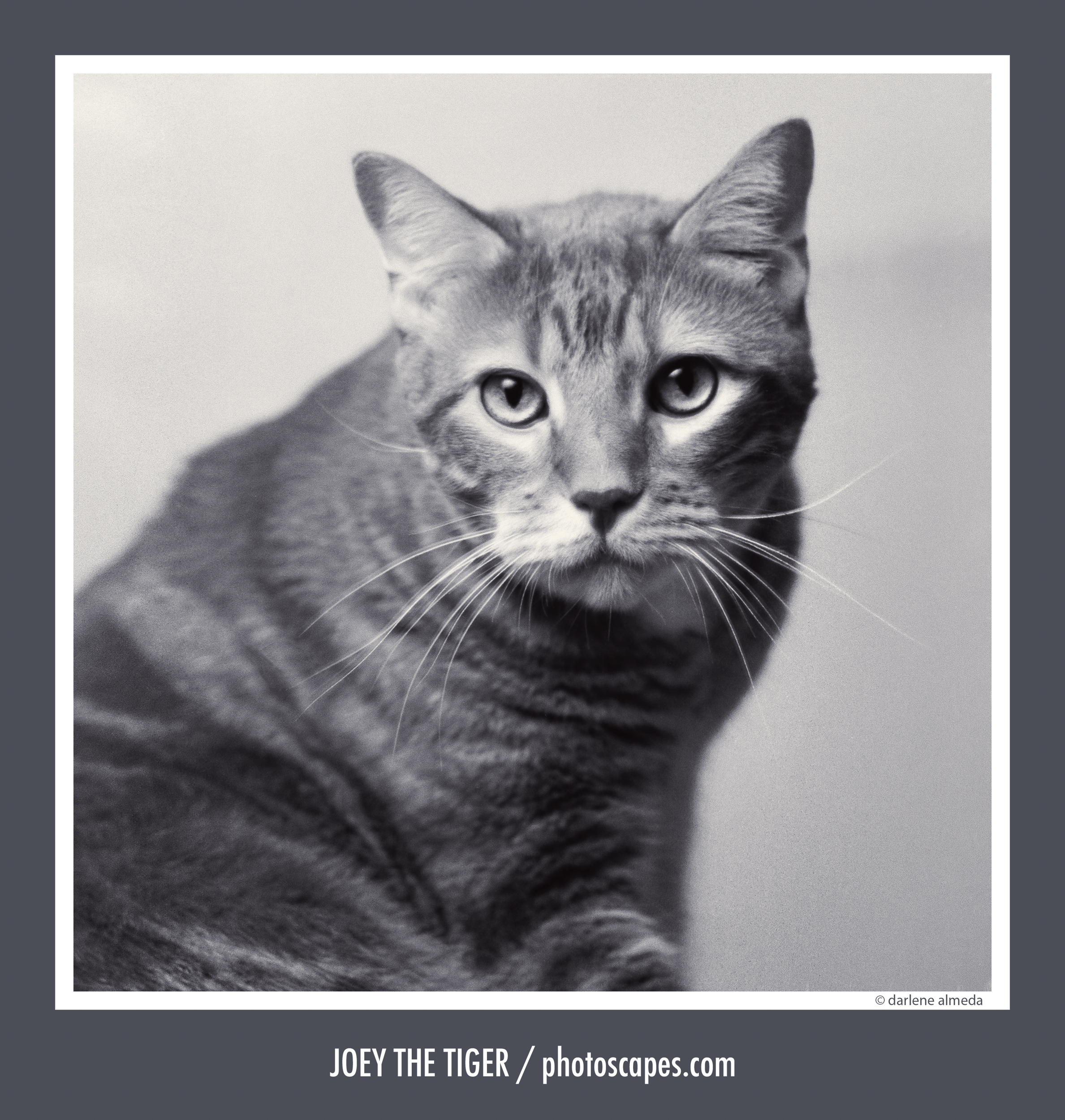The above image is the reference point for this lesson. The camera never moves. The subject never moves. Only the light does. By keeping everything else constant, it becomes easier to see how light direction alone shapes form, controls value, and defines depth. This lesson builds directly on the previous one.
The Setup
I mixed black tea with a small amount of coffee to stand in for the liquid in the glass, simply because I don’t keep soft drinks or liquor on hand. One of the things I enjoyed most during my commercial photography training was prop building, and I initially thought I would end up in food photography. While my career took a different direction, that training still shows up whenever I’m faced with a still life and an empty cupboard.
For this lesson, however, restraint matters. The goal is not to make a “pretty picture,” but to keep the focus on light direction, rather than turning the still life into a product shot. This requires a bit of self-control—especially after spending years being paid to make things look good.
The materials used here are intentionally simple: the tea-and-coffee mixture, ice, a candle glass (no rocks glasses on hand), two printed backdrops on boards (one for background, one for surface), black plexiglass, and a slab of slate that the glass rests on. Nothing fancy—and nothing you’d need to explain to a customs officer.
In the examples that follow, a single light is moved around the subject using clock-face positions: 1:30 (45°), 3:00 (90°), and 6:00 (180°). The clock face provides a visual reference, while degrees are included for those who think spatially in angles. Both describe the same idea: light placement relative to the subject.
To make the behavior of the light easier to see, each example is shown in both color and black and white.
Light Position @ 1:30 (45°)
At this position, light describes the glass clearly. The rim highlight defines the edge, the interior glow reveals thickness, the shadow anchors form to the surface.
Light Position @ 3:00 (90°)
As the light moves to the side, the glass begins to flatten. The rim highlight shifts, interior contrast compresses, and the sense of depth is reduced.
Light Position @ 6:00 (180°)
With the light placed directly next to the camera lens, the glass loses much of its shape. Reflections of the strobe and light stand become visible on both the glass and the black plexiglass. The light floods the scene rather than describing it, and the still life becomes flatter, with little separation or depth. This is an important light position, and one we’ll talk more about next.
Light Positions: What We Learned
I chose the three positions of 1:30 (45°), 3:00 (90°), and 6:00 (180°) on purpose. These are light positions every photographer—studio or environmental—should recognize and keep in their mental toolbox. They come up often, and knowing when to use them makes lighting decisions faster and more intentional.
I also chose to use an umbrella as the light modifier, rather than something more specialized like an optical snoot or projector. While those tools allow for very precise control, you have to learn to see light before you can shape it. Umbrellas are among the least expensive, most portable, and most widely available modifiers, which makes them ideal for learning. This is basic light training—and that’s exactly where foundational understanding should begin.
Many fine-art or emotionally driven images are made with the main light placed around 45°. It may not be the only light in the scene, but it’s a reliable position for describing form and creating depth. The same can be said for lighting at 90°, or anywhere in between, depending on how much shape and contrast you want to introduce.
Simply placing light deliberately between 45° and 90° is no guarantee of producing fine-art images—but it is an aesthetic tool artists have relied on for centuries. If you want to approach lighting from a fine-art perspective, studying art history is an invaluable place to begin.
Lighting at 180°, or close to the camera lens, is where a lot of snapshots live—and why so many of them suffer from what I’ll unapologetically call ugly lighting. Built-in flash and on-camera light tend to produce red pupils, washed-out skin tones, and unflattering shadows. We’ve all seen it. We’ve probably all made many and wondered, How can I do better?
That doesn’t mean a light at 180° is useless—far from it. When combined with a light placed at 45° or 90°, it can serve as controlled fill, helping manage shadow detail rather than destroy it. And that, my friends, is our segue into a much larger topic—one that leans more toward the artistic side of photography—which we’ll take on next.
Because in the end, lighting isn’t just a tool—it’s the one doing most of the talking.

